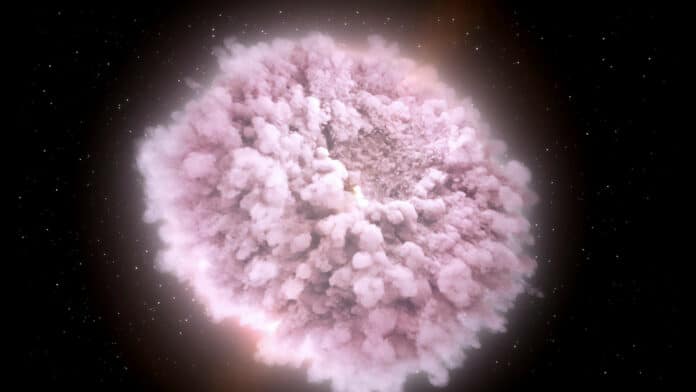Nuclear power is being considered as one of the ways to reduce dependence on fossil fuels. However, dealing with nuclear waste products remains a significant challenge. Radioactive waste products can be converted into more stable elements, but this process is not yet viable at scale.
Recently, physicists from the University of Tokyo led a study that discovered a method to more accurately measure, predict, and model a key part of the process to make nuclear waste more stable. This breakthrough could lead to improved nuclear waste treatment facilities and even new theories about the origin of heavier elements in the universe.
The topic of nuclear power can be sensitive for some people, especially in Japan, where events such as the atomic bomb and the Fukushima disaster have had a significant impact on the country’s history. However, due to the limited space for renewable energy, such as solar or wind, nuclear power is considered essential in helping to reduce carbon emissions.
As a result, researchers are working hard to improve safety, efficiency, and other aspects of nuclear power. Associate Professor Nobuaki Imai and his colleagues from the Center for Nuclear Study at the University of Tokyo believe they can make a valuable contribution by enhancing nuclear waste processing.
“Broadly speaking, nuclear power works by boiling water using self-sustaining nuclear decay reactions. Unstable elements break apart and decay, releasing heat, which boils water, driving turbines. But this process eventually leaves behind unusable waste that is still radioactive,” said Imai.
“This waste can remain radioactive for hundreds of thousands of years, so it is usually buried deep underground. However, there is a growing desire to explore another way to make unstable radioactive waste more stable, avoiding its radioactive decay and rendering it far safer to deal with. It’s called transmutation.”
Transmutation is an interesting concept involving adding a neutron to an unstable element, effectively changing it into a slightly heavier version. This process is considered to be the opposite of nuclear decay, where an element breaks apart and releases radiation.
Depending on the initial substance, the new form created through transmutation can be safe and stable. However, accurately quantifying this process has been a challenge, making it difficult to move forward with producing prototype new-generation waste management facilities.
“The idea actually came from a surprising source: colliding stars, specifically neutron stars,” said Imai. “Following recent observations of gravitational waves emanating from neutron star mergers, researchers have been able to better understand the ways neutrons interact and their ability to modify other elements.”
“Based on this, we used a range of instruments to narrow our focus on how the element selenium, a common nuclear waste product, behaves when bombarded by neutrons. Our technique allows us to predict how materials absorb neutrons and undergo transmutation. This knowledge can contribute to designs for nuclear waste transmutation facilities.”
It’s difficult for researchers to observe acts of transmutation directly. Instead, the Japanese team can observe how much of a sample does not transmute, and by taking readings to know that transmutation did, in fact, take place, they can estimate, albeit very accurately, how much of the sample did transmute.
“We are confident that our measurements accurately reflect the real rate of transmutation of unstable selenium into a more stable form,” said Imai. “We are now planning to measure this for other nuclear waste products. Hopefully, this knowledge will combine with other areas required to realize nuclear waste treatment facilities, and we might see these in the coming decades. Though our aims are to improve nuclear safety, I find it interesting that there is a bidirectional relationship between this research and astrophysics. We were inspired by colliding neutron stars, and our research can impact how astrophysicists look for signs of nuclear synthesis, the creation of elements in stars, to better understand how elements heavier than iron were made, including those essential for life.”
Journal reference:
- N. Imai, M. Dozono, S. Michimasa, et al. Neutron capture reaction cross-section of 79Se through the 79Se(d,p) reaction in inverse kinematics. Physics Letters B, 2024; DOI: 10.1016/j.physletb.2024.138470
